Understanding How Tempo Changes the Game in TFT
Tempo is one of the advanced concepts that I teach TFT players. It is so important but can be quite confusing. I dive into detail on what this concept is and how we can apply it along with when to.
Tempo is one of the advanced concepts that I teach TFT players. It is so important but can be quite confusing. I dive into detail on what this concept is and how we can apply it along with when to.
The best players in TFT understand tempo and how intense the game can get, but what does that mean? TFT is an auto battler where you sit there and watch, how does that make sense? Is it ever intense like League of Legends where you have massive team fights or seeing insane headshots in Valorant? Exciting plays also happen in TFT, and I want to explain in depth what goes into those decisions along with how you can incorporate it into your gameplay for more exciting plays.
When we talk about tempo, we’re generally either referring to win streaking and putting continuous pressure on the lobby, like League where while you’re ahead you just keep forcing the enemy team to react to you. This can also be true in reverse, where you lose streak on purpose to maximize gold value and then put pressure later in the game. Tempo is in the now generally, and value is long term. But how do we take advantage of this ebb and flow? Let’s go over two examples.
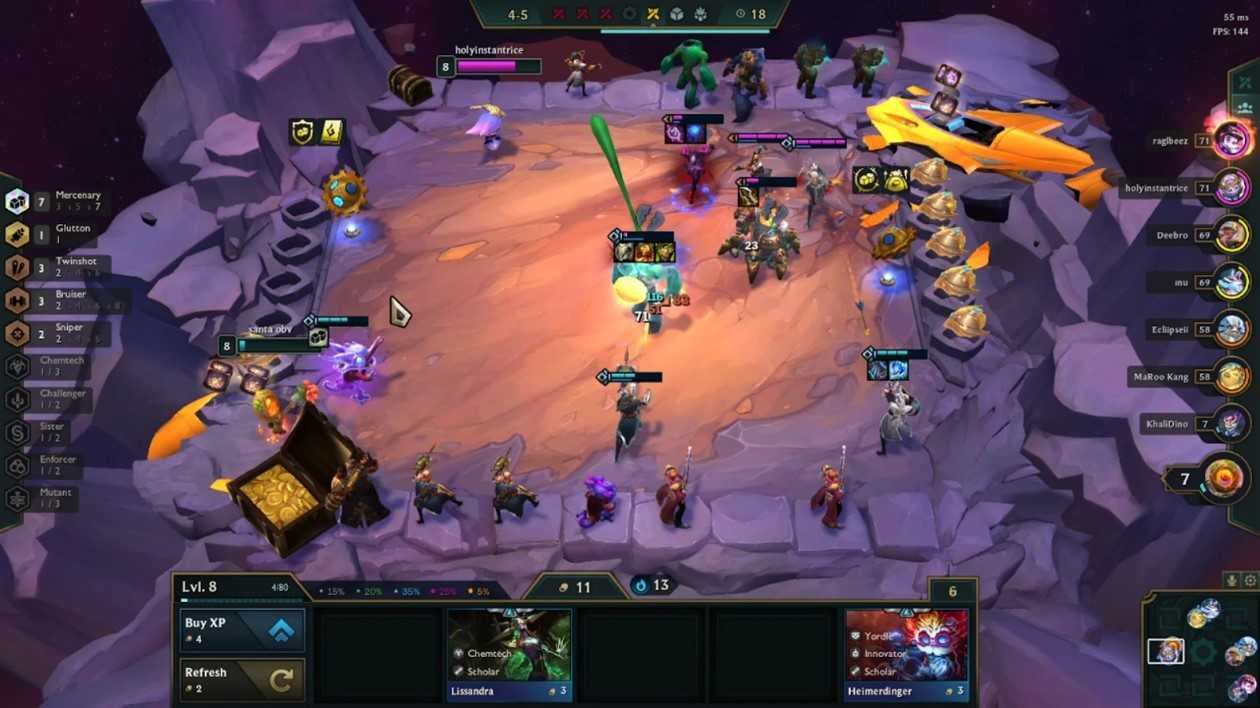
In this picture we see the poster child of a playstyle that gives maximum value: Mercenaries. With this origin in Set 6, the longer you lost or gave up tempo, the greater the reward was. This is the extreme example of creating tempo after you cash out, which means winning a round to collect all the loot in the mercenary chest, such as items and gold. Generally, to maximize value, we trade HP, which is just another resource, and in turn we gain better items with carousel priority and a strong economy.
On the other hand, playing more aggressively allows you to put pressure on the lobby and is generally a more consistent playstyle. You can’t win as often due to not having carousel priority and lower value, but this is where situational awareness is key. If your lobby has multiple mercenary players or just weaker boards trying to lose streak, you can easily win streak and generate strong economy while saving HP, whereas if you also try to lose streak, you need to manage losing to several other weak boards which is much less viable.
This chart shows how it can be difficult to balance generating value vs. tempo when playing mercenaries, as there are a lot of variances along with estimated value calculations. We can’t quantify the value of hp in terms of gold consistently as well.
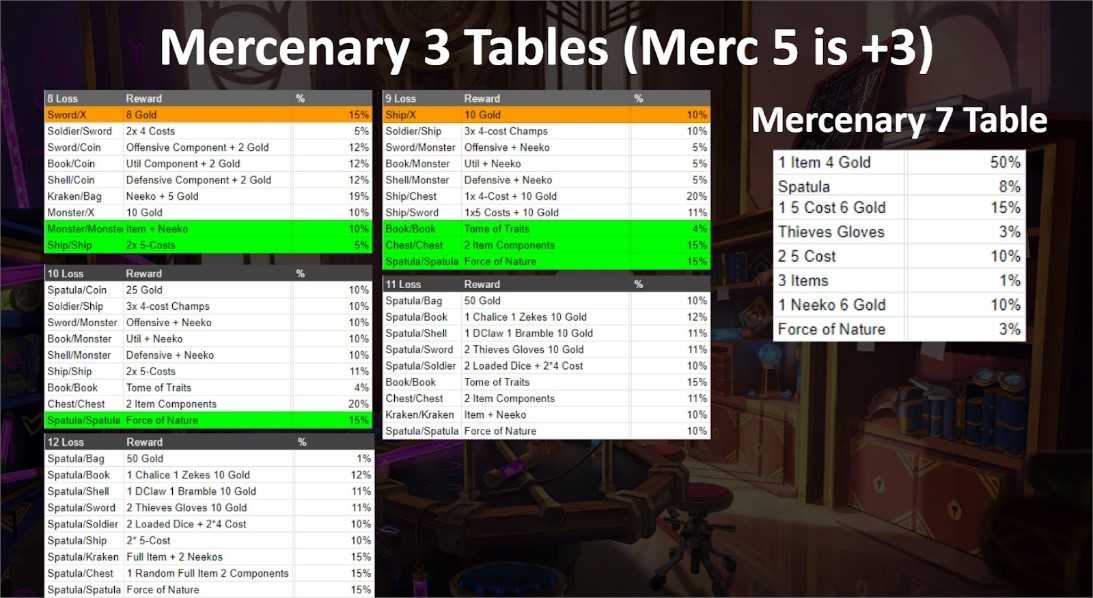
This is where formatting of a tournament comes into play as not only the scoring system decides what playstyle will generally work better, but also your score dictates how you should play. For example, the final day for Worlds is Checkmate Format, which means you must win a game after reaching a certain point threshold. This format rewards the 1st or 8th playstyle (higher variance) once you hit the threshold, which means we want to maximize value to hit best in slot items for our units and roll at higher levels as the average gold value of our shops will be increased. On the other hand, when there are point thresholds to move on to a certain day, this generally rewards consistency, especially if the point spread is 1-8 (1 point for last, 8 for first), some formats give bonuses to top 4 or take away points for going 8th. What this means to us is that tournament tempo and playstyle can vary drastically.
But what if you just want to climb the ladder? Does this matter then? Well as previously stated, situational awareness in a lobby is key. However, you can generally be greedier on the ladder and maximize value to win more often as you won’t be punished due to the varying levels of skill in a lobby, along with the more casual environment.
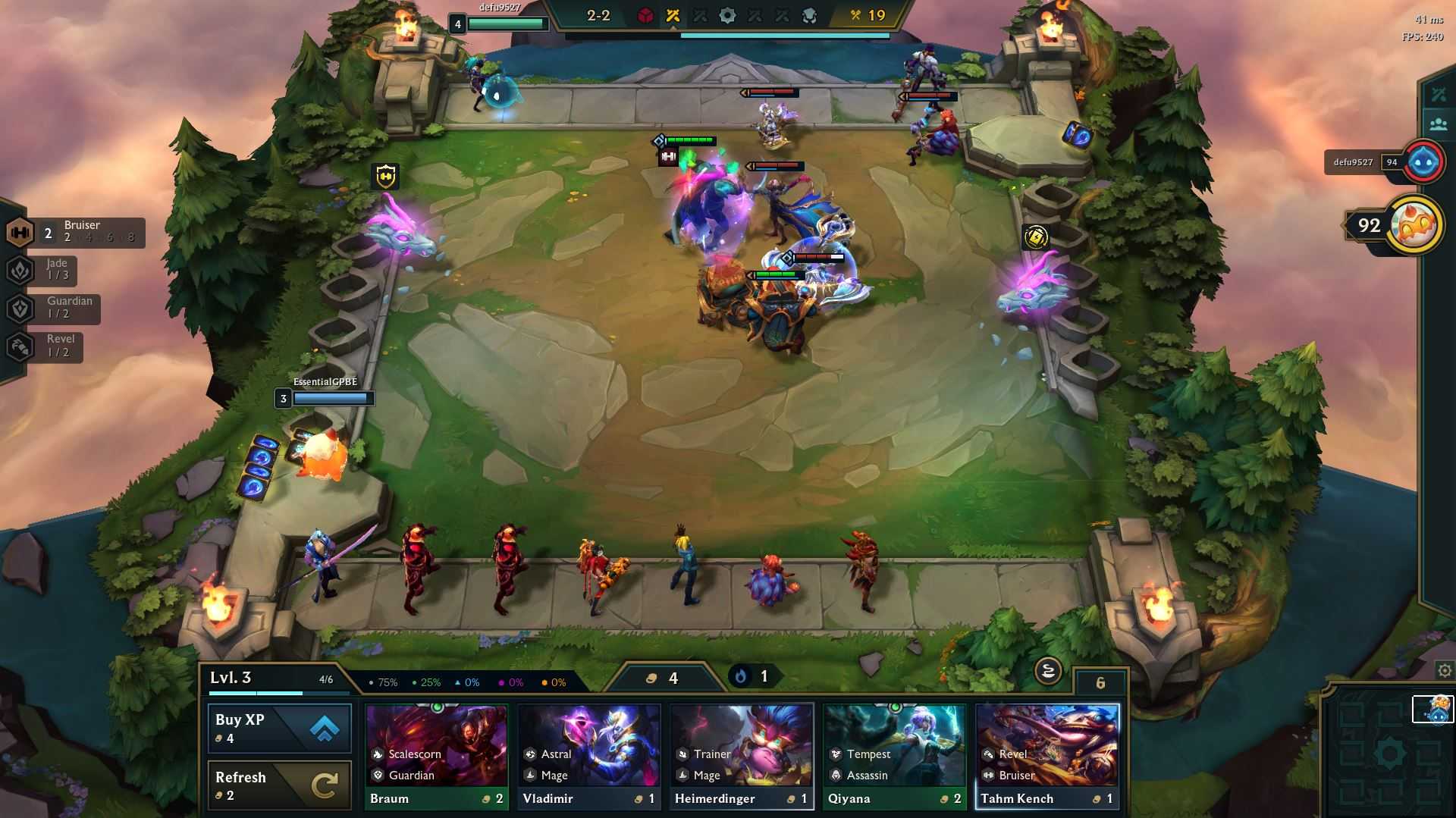
So, let’s look at the opposite scenario, win streaking and maximizing our pressure on the lobby. Another definition for tempo that will help explain this concept is sacrificing gold for the strongest board. This means holding more pairs of units to upgrade units, slamming items instead of holding out for best in slot, leveling off curve, and rolling down further instead of staying at the higher interest intervals. So, if any of these concepts were foreign to you, let me explain.
If I sell bench units here, I could reach a higher amount of interest gold, as every 10 gold grants me an additional one, stopping at 50. It is very common for people at lower elos to always stay above the 50-gold threshold no matter what. However, If I hit these upgraded units, I can start win streaking and saving hp while increasing my economy.
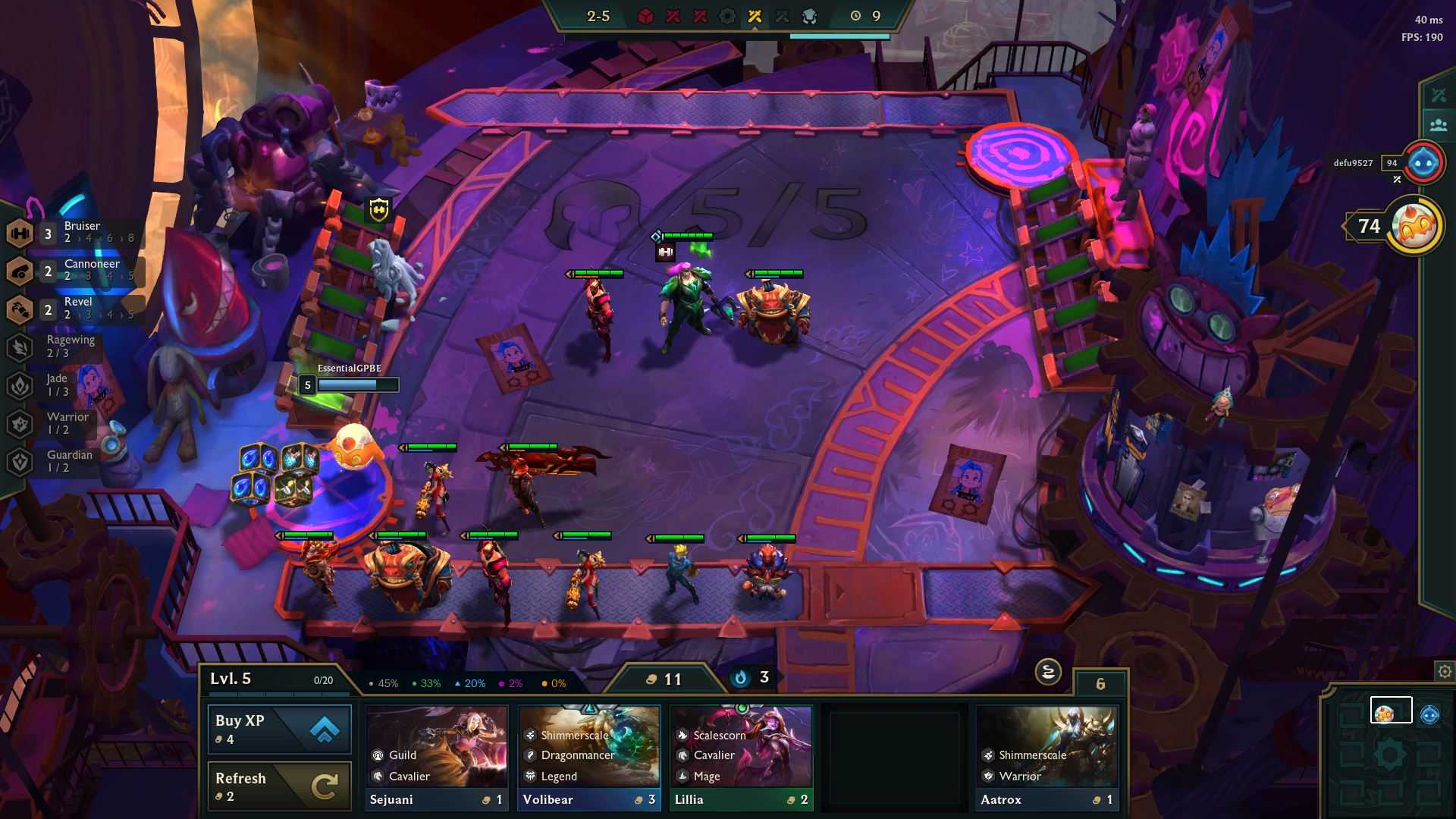
We also can slam items which means combining two components to create an item. A big part of improving is learning when to balance creating items and waiting for better ones. People will go for the best items which can cost you health and gold, and while that is fine sometimes, each instance is a calculation. Is the value of making a suboptimal item now better than making a better item later? We have to ask ourselves this every time.
For example, let’s say we are playing an ability power base team, and on the first carousel we grab a Tear, and by Stage 2-5 we have been given a Vest and a Bow. Now the Tear is very valuable for our composition, but we were given two weaker components and want to find a use for them. This is a great time to make Statikk Shiv. This is a strong early game item that AP comps use well, and it uses the low priority Bow. This is a much higher tempo play than waiting for the Tear to become a stronger item like Blue Buff or Spear of Shojin.
The value of the Shiv is very high as we will save HP, win more rounds which generates more gold, and negate a weak component. Late game, however, the value of this item is much weaker and not worth creating as much, but why is that? To simplify this scenario, let’s say I make an item on Stage 2-1, and I know I will die on Stage 5-1, I am getting three full stages of value from the item I made. If I wait and instead make an item Stage 4-1, I only get value from the item for 1 stage. We can’t quantify this to a consistent amount, but on average it is always a higher return to make an item on Stage 2-1 rather than wait.
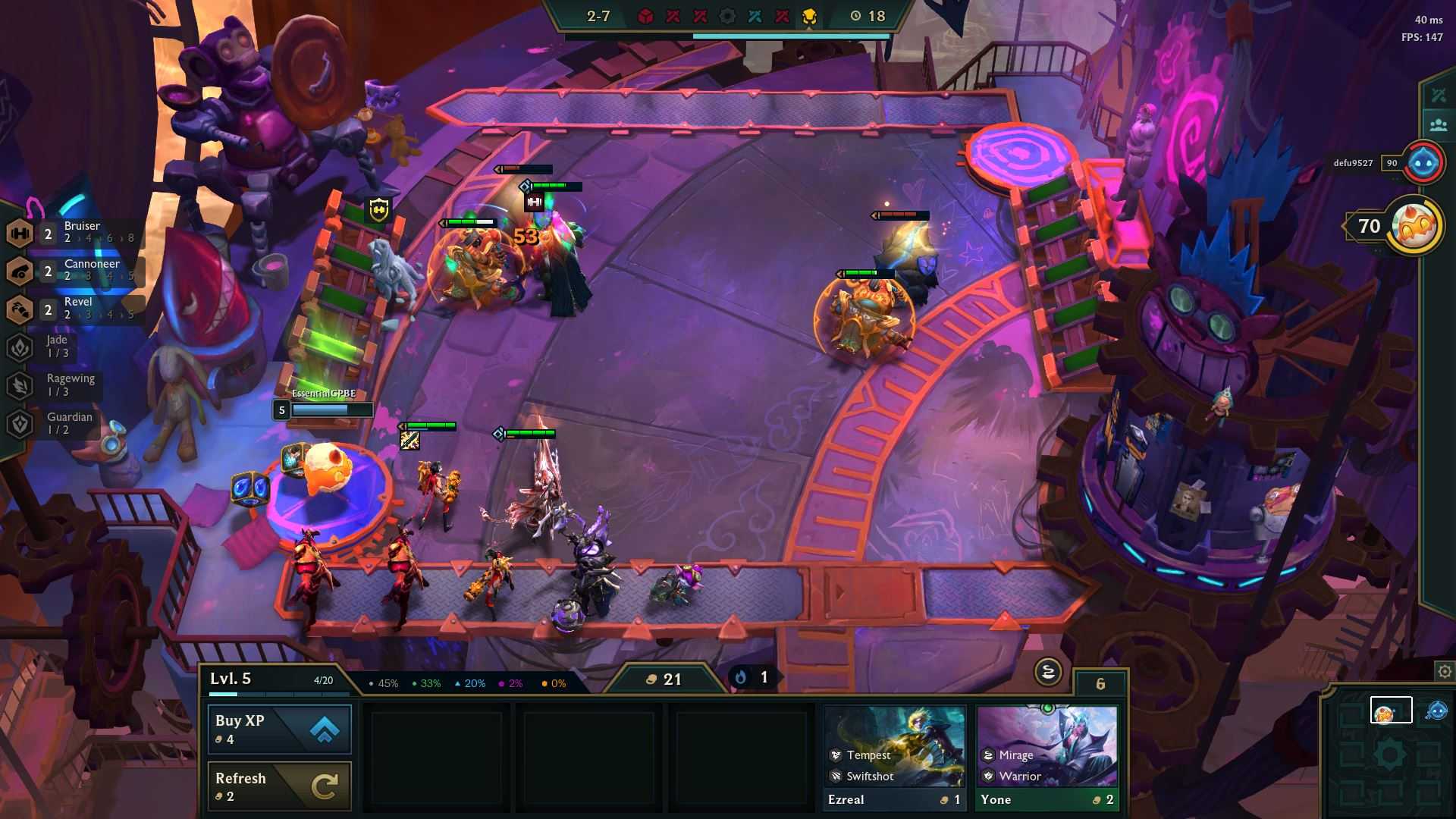
The last fundamental I will cover with tempo is leveling intervals. We generally want to level on specific stages that are on curve, which means when we level our XP bar is 0/x, x being the experience needed for the next level. This is the most efficient way of leveling so that more XP isn’t just left over and gold is wasted. The correct tempo play sometimes however is to level on stage 3-1 for example instead of 3-2. While this play is slightly less efficient, it gives us a solid power spike to continue our win streak, especially if there are stronger boards. In the above picture, we can level next turn if we think our board will start win streaking and the unit on level 6 is a big spike, which could also be strong enough to stop other people’s win streaks. Since we lost the previous round however, it is also fine to wait a round, especially if the unit we would put in doesn’t add much value.
So in conclusion, tempo is an important factor in your games, and incorporating this can really elevate you above the competition as the majority of the player base doesn’t even consider this. Make sure to not only consider your long-term game plan but think about what helps you the most in the present and try to calculate what gives you the best average placement.